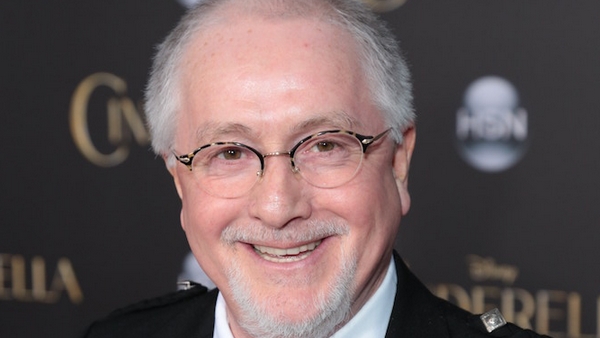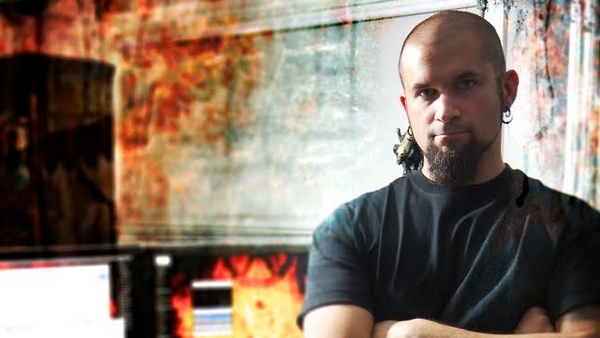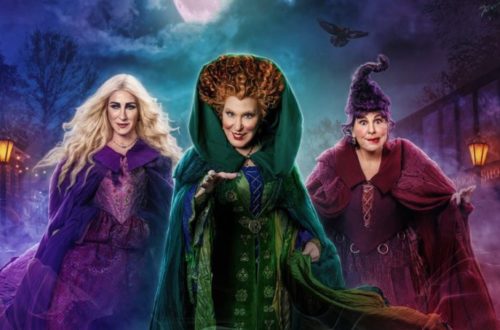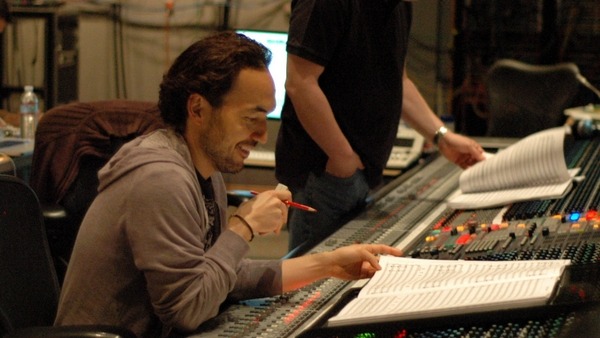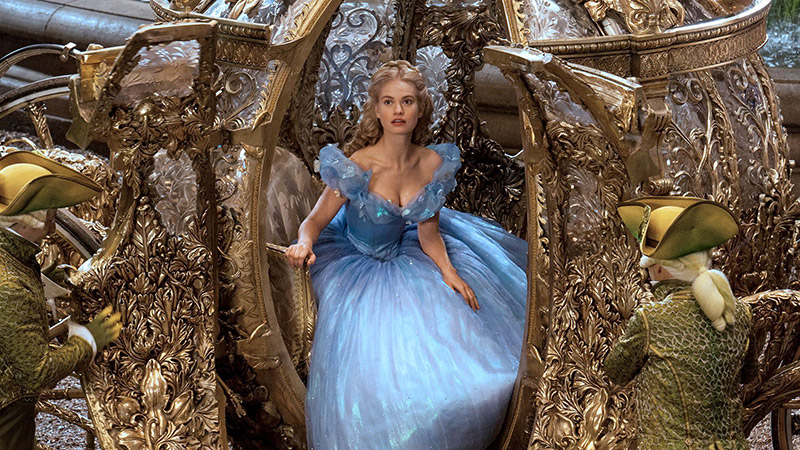 If you visit the site often, or know me personally, you know that I love film…but I love film scores a whole lot more. Our “Composer Series” has become a large part of the site, and it has been incredibly rewarding being afforded the opportunity to speak with those who have created some of the most iconic and indelible themes of the last half century. Case in point.
If you visit the site often, or know me personally, you know that I love film…but I love film scores a whole lot more. Our “Composer Series” has become a large part of the site, and it has been incredibly rewarding being afforded the opportunity to speak with those who have created some of the most iconic and indelible themes of the last half century. Case in point.
When we spoke with Patrick Doyle last year, we discussed his and Kenneth Branagh’s efforts to reboot the Jack Ryan franchise. His hybrid approach to the tech-thriller score was an exercise in tension and excitement, and everything you could want in a spy film – the man just knows what to do with the orchestra.
Now with Cinderella (his 12th collaboration with Branagh), Doyle has gotten to do something he’s been waiting his whole life for. He created something for the studio which he’s greatly admired since he was a boy. By providing this new score, to what is perhaps the most recognizable famous fairy tale, Doyle has become part of the Walt Disney family. His wholly original compositions create such a lush and vibrant backdrop to Branagh’s live-action adaptation of the classic animated film. The music is magical, enchanting, and, well, just so Patrick.
We had quite an extensive conversation last year (check it out here), and we’re incredibly humbled that, even while working on major Hollywood films, he remembered details from our lively exchange. Today was no different. Enjoy the highlights of our time with the incomparable Patrick Doyle.
GoSeeTalk: Absolute pleasure to be speaking with you again Patrick. This was an extraordinary score, so how have things been with you on this fanciful roller coaster of strings and waltzes?
Patrick Doyle: It’s been hugely enjoyable Marc, because every time I work with Kenneth Branagh it’s always a complete joy. The studio has been extremely supportive and the whole experience has been incredible because everyone has made me feel like I’m part of the Disney family. I am really very fortunate to have added to the legacy of the story.
The very first Disney movie I ever saw on my own as a boy was Fantasia. I was so captivated by the clips I saw on television, but they were in black and white, so when I saw the film in color, I was completely blown away. So to be part of this is a great honor, and the roller coaster ride has been exciting and rewarding.
Cinderella is such an enchanting score. You have used strings so well in this film and brought the entirety of the music and the story to a whole new level. Like you told me last time, you’re a bit of a romantic, so strings are your go-to instruments. But aside from working with Kenneth, and aside from being endeared to the Disney legacy, what was the most fun thing for you about this? It seems like you had a blast with all those waltzes and polkas.
Well I have to agree with you when it comes to the ballroom scenes. This might be quite obvious and evident, but
the whole story leads up to the ball and what takes place after it. The ball is the climax to the film, so it was very important that you get the joy and the sheer magic as well as the fun and exhilaration of that evening. Also, it’s the time when Cinderella and the Prince meet under a new guise as it were, so the first classic dance that they have together, that waltz, was extremely important because I felt it would be the main theme of the film. I felt so strongly about the idea that it was written way in advance of the film shoot.
I believe I had written it at the end of October in 2013, and it was sent to the choreographer who turned around to begin working with the actors very very shortly after that. All the rest of the waltzes arrived a long time before as well. I wrote two while I was in France, and one I wrote in London. I actually wrote the final one the day before the actual ballroom shoot began. *laughs. Ken called me and said “could you possibly have one more waltz for tomorrow afternoon?” *Laughs*
I thought nothing of it, because it was for Ken, and it’s the case of me doing anything that he wants, no questions asked. We
have four polkas and three waltzes in the score. An enormous amount of music was written for the ball and it was nice to be able to write in that 19th century style. I’ve always admired that type of music, like Tchaikovsky, and Strauss, and polkas of that time period.
I have a great respect for that genre. So it was intense fun because the film is such a classic movie and a wonderful chance to get to write a classical score and, of course use the London Symphony Orchestra. That is always a tremendous opportunity for me.
One of the things that comes through in your music is just the pure magic that seems so effortless. This has not only the whimsy of a Disney movie, but it also shows the incredible reverence you have for the studio and this property.
A real highlight of the score is the cue you’ve written called “Orphaned” which plays as the backdrop to a big part in the film. This score as a whole however afforded you a great opportunity to go all out in terms of thematic material.
Absolutely right Marc. If you look at the movie itself, it’s so lush and so gorgeous that I felt I had to match the sumptuous look. The performances are so real, and so respectful of the script, and Ken takes great care to respect it in the same way as his other films because it has a very Shakespearean quality.
The film feels quite grounded, so I felt I had to match that with my score which was quite emotional throughout most of the film. It also needed a boldness and in places I had to make sure I did not shy away from how tragic it is to be orphaned, and how tragic Cinderella’s situation was.
It’s amazing to watch yours and Kenneth’s career grow together because you two are constantly reinventing yourselves. It’s probably because you never do the same thing twice. But I bet that’s got to bug you from time to time. Just recently, you’ve gone from Thor, to Jack Ryan, and now Cinderella. You create such a wonderful palette that becomes a one-off. Do you ever say, “Come on Ken, can we just do one sequel so I can use some of this old stuff again? I really liked it!”.
This is a fairy-tale, but this to me didn’t seem anything more than a natural project for Kenneth to direct. He’s never talked about wanting to work on a fairy tale, to say nothing of a timeless one or classic one like Cinderella, but it just seemed to be the most natural thing in the world for him when he told me he was doing this. But yes, we are very, very fortunate to get to do this film, and really I’m very fortunate to work with him.
Over the years we’ve done a lot – tragedy, Shakespearean, eccentric – and I think one has to be a chameleon in order to grow and to survive as a composer. The same applies to fine directors which he most certainly is.
There’s a cue in the movie called “Pumpkin Pursuit” which really gets the adrenaline going. You mentioned before that there’s always a learning curve in every film. So if it wasn’t writing the waltzes, or trying to deal with the many overlapping themes, what did you experience in this that pushed your limits? Also what kind of input did you get from Kenneth along the way?
I found that the film stretched me in many ways. I felt I had to come up with something that was very Disney, but
also allowed me to do it in my voice is a composer. It was very interesting to write the waltzes and polkas of the 19th century, and you’re right, that was a real stretch for me. In the case of the “Pumpkin Pursuit” theme, not only did I have to write a piece that really, really pumped up the action, but one that was also intertwined with the chimes of midnight. It had to incorporate those 12 strikes to give you a sense of time passing as you were tackling the adventure on screen.
It’s gives you a trajectory sure, but also a climax with the shrinking pumpkin so it stretched me as a composer but it was exciting. It never became daunting because I took it one day at a time. Apart from the ballroom music which was necessary to get done way ahead of time, I tackled the film in chronological order, so by the time I came to “Pumpkin Pursuit” I was all pumped up and ready for it. *Laughs*
But the film has many, many different emotions and that is played up by all the colors of the orchestra. There were very different motifs and variations on melodies for the Prince, the waltz, the Princess, the dance with Cinderella, and her father, then there’s a theme for the step mom, and the tune that Cinderella’s mom sings to her.
It was all a lot of fun, especially the thematic material for the Fairy Godmother, so the film asked a lot of the score and it tosses and turns to support not only the emotion and action throughout, but the acting and wonderful visuals. They helped me find a wonderful rhythm for the story. Emma Norton’s visual effects are just stunning and beautiful elements in this wonderful cinematic tapestry. It was all so inspiring and I’m just really proud of the score.
I think the best compliment I could probably give you is that it felt like a Disney movie. It was what you would expect, but without you expecting it, if that makes any sense. Those first couple notes really take your mind to where the story needs to be and I think you nailed it.
Well, the studio has been very kind, and Ken has been very kind, but I have to say that all of the work stems from his vision. It’s a remarkable achievement and I think he’s created a classic movie that is just extraordinary. And I know the studio is happy with it, so I’m delighted for Ken and I don’t think that any of us could have done the job that we did without his incredible support.
Incredible thanks to Patrick for his time. Coming this May, Doyle will release the first of a two-volume piano album which will be comprised of solo piano work from his film music themes.
